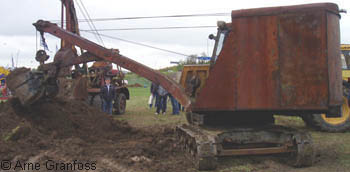Refugees from Britain and allies

 UNDER CONSTRUCTION Version 0.23
UNDER CONSTRUCTION Version 0.23
|
Sweden in World War II - across borders
|
 |
![]()
Among those who fled from Norway after the German attack on 9 April 1940, was the staff of the British legation in Oslo. They did not have visas, but
were lucky to meet the president of the Norwegian parliament who also was on his way to Sweden. He produced a document for them to show to the
Swedish authorities - and it worked without problems. (The president himself had received a hastily written visa from the Swedish chargé d'affaires, when they had met in Elverum the same morning. [s01]
![]()
During the war Germany sent 100 000 prisoners from the Soviet Union to 445 camps in Norway, to work for the Germans. (13 000 of them died in Norway.). ( I don't know if that number includes the Yugoslavian prisoners, who seemingly were more than a couple of thousands.). [s51]
One morning shortly before Christmas 1943 the prisoners were lined up on the camp yard of a camp in northern Norway, and were about to leave the camp for the days roadwork. One of the prisoners overheard the camp commander who talked to the guards. Among others the commander said, that when the road was finished the prisoners had to be dead. With the help of an officer in the German Organisation Todt and local Norwegians the prisoner and a countryman managed to flee over the mountains to Sweden, despite their bad condition and the cold winter weather. [s51]
Around 3,000 escaped war prisoners had found the way to Sweden by 1 December 1944. The largest groups were from the Soviet Union and Yugoslavia, and had fled from prison camps in Finland and northern Norway. (At the time 1,000 persons had been sent home to the Soviet Union.) [s60]
To Sweden came escaped war prisoners from several warfaring countries. Some, foremost French and Polish, managed to get to Sweden on ships that sailed from Germany to Sweden. [s60]
![]()
During WWII some hundreds of sailors, foremost from the Netherlands and Norway, on German ships escaped to Sweden when the ships were in Swedish harbours or Swedish waters. At first Sweden followed international rule and returned them to the ships, but soon the situation in Europe led to the decision that they were allowed to remain in Sweden. [s60]
![]()
![]()
2012-10-19. www.granfoss.se. Text/pictures: Arne Granfoss